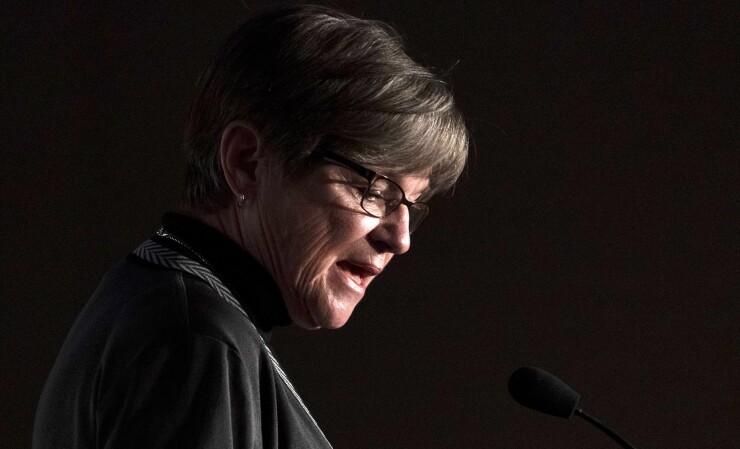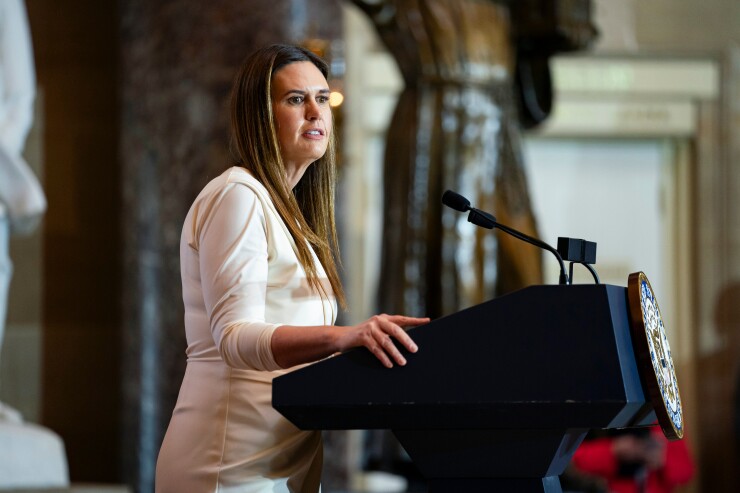States continue to chip away at income taxes by lowering rates or adopting tax credits, with Arkansas and Kansas enacting reductions last month that will reduce collections by hundreds of millions of dollars in fiscal 2025.
But the overall trend of large tax cuts, which reached a peak in 2022, has slowed considerably, according to Fitch Ratings.
It reported in June that an estimated $6.3 billion of state tax cuts were introduced or enacted into law this year, "meaningfully less than the $26.1 billion and $40.2 billion of tax cuts, rebates and credits adopted in 2023 and 2022, respectively."

"In some cases, actual revenue losses exceed state estimates, although credit quality remains stable as states have ample reserves and broad budgetary flexibility," the report said.
In April, which is the most important revenue month for states that tax personal income, 26 states reported year-over-year declines from that tax in inflation-adjusted terms and 22 reported declines in nominal terms, according to Urban Institute data.
"Weaker state tax revenues in recent months were expected given widespread state tax cuts over the past three years," Lucy Dadayan, a principal research associate at the institute, said in a report on April tax revenue. "With their budgets buoyed by both federal fiscal support and strong own-source revenue growth in fiscal years 2021 and 2022, 13 states cut income tax rates for tax year 2022, and 17 states cut income tax rates for tax year 2023."
Cutting or phasing out the income tax could make states more dependent on sales tax collections, which have experienced a growth slump.
"Growth in sales taxes, month over month, year over year growth, has really been slowing, and in a few cases, the sales tax has declined a little bit year over year, compared to the last fiscal year," Michael D'Arcy, a Fitch analyst said. "If the states that are reducing income taxes very quickly and with repeated cuts are counting on sales taxes to fully make up for the lost revenues from the income tax, I think they're going to be disappointed."
Kansas and Arkansas, which both have sizable budget reserves, passed income tax cuts during special legislative sessions in June ordered by their governors even as tax revenue shrank or underperformed estimates.
Kansas' individual income tax revenue in the first 11 months of fiscal 2024 was down $76.8 million or 1.9% and 1.3% below estimates. Retail sales tax collections fell 3.3%. Arkansas' July 2023 through May 2024 income tax revenue fell $89.1 million or 2.5%, but was 0.2% above forecast, while sales tax collections, which were up 2.6%, were 0.3% below forecast.
Kansas' Democratic Gov. Laura Kelly called for the special session
She has also warned against tax reductions like those enacted
"Senate Bill 1 provides significant tax relief while preserving our ability to continue fully funding our public schools, roads and bridges, and State Water Plan," Kelly said in a June 21 bill signing statement.
The measure shrinks the number of individual income tax brackets to two from three beginning in tax year 2024, reduces the top rate to 5.58% from 5.7%, exempts Social Security payments from state taxation, and increases tax deductions.
The changes will cost Kansas an estimated $471 million in fiscal 2025,which began Monday, and $379 million in fiscal 2026, according to
Prior to enacting the tax cuts, Kelly signed into law a fiscal 2025 $25 billion all-funds budget that includes $10.4 billion in general fund spending. The state projects ending the fiscal year with a $2.1 billion general fund balance and $1.7 billion in its budget stabilization fund.
S&P Global Ratings lifted the outlook on Kansas' AA-minus rating to positive from stable in 2023.
"We could return the outlook to stable if we believe the state is reverting back to a pattern of structurally unbalanced budgets resulting from tax cuts that are not offset by spending reductions or if it is slow to implement adjustments when immediate shortfalls occur," analyst Joe Pezzimenti
Fitch, which in January released its first-ever issuer default rating for Kansas at AA with a stable outlook, is keeping its eye on the state in the wake of the tax reduction.
"In the short term, they have sufficient fiscal reserve buffers in place to cushion the effects of the costs and allow them to adjust over the next few years as the total revenue impact of the cause is generally realized on the budget," D'Arcy said. "Kansas is something we're going to be watching very carefully to see that it doesn't throw them at structural imbalance over the longer term."

Arkansas, which has been on a tax cutting binge, held a special session to take up more reductions with Republican Gov. Sarah Huckabee Sanders declaring: "With the state's financial stability, increased economic growth, healthy reserve accounts, and conservative spending policies, additional tax reductions can be enacted to provide further tax relief during this period of heightened inflation under 'Bidenomics.'"
The latest tax cuts, which Sanders signed into law last month, reduce starting in tax year 2024 the top individual income tax rate to 3.9% from 4.4% and the top corporate tax rate to 4.3% from 4.8%. The moves are expected to shrink general revenue fund revenue by $483.5 million in fiscal 2025 and by $322.3 million in fiscal 2026, according to a
Rob Marker, an analyst at S&P Global Ratings, which revised the outlook on Arkansas' AA rating
"The fiscal 2025 budget increases spending a modest 1.76%, incorporates the impact of the tax cuts, and provided the state's long history of stable financial performance, conservative budgeting, and significant flexibility to adjust spending, we anticipate reserves will remain sufficient to mitigate potential revenue disruptions in the near term and that budgets will generally remain balanced," he said in an email.
The state may not be done cutting. In an interview last week with KASU radio, Sanders said her goal is to
Oklahoma Republican Gov. Kevin Stitt's plan to put his state on the path to wiping out the income tax
During fiscal 2025 budget negotiations, Senate President Pro Tempore Greg Treat contended the state could not afford an income tax cut on top of a grocery tax elimination.
In February, Stitt signed legislation to end the state's 4.5% sales tax on groceries, which he called the largest single-year tax cut in Oklahoma history. The move is
The state enacted an $11.84 billion budget amid a projection it would end fiscal 2025 with $4.21 billion in total reserves and unspent cash.





